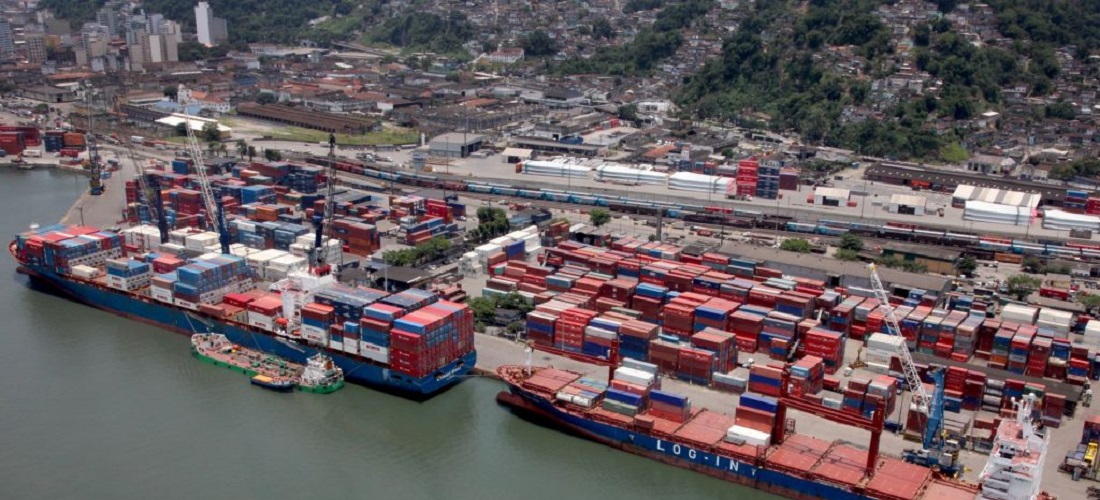
Weather Woes Threaten 2024 Soybean Harvest, Pose Challenge for Port of Santos
Jan, 05, 2024 Posted by Gabriel MalheirosWeek 202401
Meager rainfall and the climatic imbalance that plagued several Brazilian states are expected to affect the 2024 grain harvest, particularly the soybean crop, according to Antonio Galvan, the president of the Brazilian Soybean Producers Association (Aprosoja). The soy complex (grains and meal) is one of the driving forces behind the cargo throughput of the Port of Santos, which has been breaking successive records lately.
Last year, up to November, 38.6 million tonnes were shipped in and out, according to data from the Santos Port Authority (APS). Still, it is worth noting that some ships/terminals have not yet submitted all their information. To put this growth into perspective, 25.1 million tonnes were shipped in 2019, followed by 27.9 million in 2020, 30.3 million in 2021, and 34.6 million in 2022.
See below the top destinations for Brazil’s soybean exports from January to November 2023. The data is from DataLiner.
Top Soy Destinations | Jan 2019 – Nov 2023 | WTMT
Source: DataLiner (click here to request a demo)
“We have never had such an atypical weather pattern. Because you plant in one year and harvest in the next, soybean planting is delayed in several states. For example, in Mato Grosso and Goiás, this stage should have ended by November or early December,” explains Antonio Galvan. “In Paraná, we see an excess of rain in one part of the state and a shortage in another,” he added.
Given these circumstances, the numbers forecasted by the president of Aprosoja are far from optimal. “If we reach 130, 140 million tons, we would have to thank our lucky stars,” he concluded. According to Galvan, the previous soybean harvest closed at around 155 million tons.
Not a Problem, But…
Marcos Vendramini, a port consultant and director of V2PA Engineering and Consulting, sees no problem for the regional terminals and transportation systems to export grains. “The Port of Santos has been constantly expanding its capacity, both through means (infrastructures and terminals) and methods (operational processing) with heavy investments, especially in solid bulk terminals.”
However, Vendramini argues that specific bottlenecks in the cargo reception system could prove a hindrance; for example, works that narrow or restrict traffic on the access routes to the port and terminals or unfavorable weather conditions, such as excessive rainfall during peak shipping periods.
Accessibility
Ivam Jardim, a port consultant at Porto Consultoria Agency, made it clear that, regardless of the moment, it is necessary to demand speed from the state in making investments in accessibility, specifically road and maritime.
As for the road situation, Jardim stresses the need for another highway connecting the Rodoanel [Ring Road] to the Left Bank of the Port of Santos. “It will help the Continental Area of Santos, Guarujá, and Cubatão, thus splitting the heavy traffic with Anchieta.”
As for maritime accessibility, Jardim notes that it is necessary to start studying the concession of the Access Channel of the Port of Santos “as soon as possible,” using the same methodology developed in Paranaguá, Paraná, a direct competitor for agribusiness cargo in the South/Southeast.
As for terminals, Jardim recalls that in the last decade, a large volume of investment has been enacted at the Port of Santos, such as ADM do Brasil and Terminal XXXIX. “And that continues with Cofco and Terminal Exportador de Santos (TES) on the Right Bank, and Terminal Exportador do Guarujá (TEG) and Terminal Exportador de Açúcar do Guarujá (Teag) on the Left Bank.”
Source: A Tribuna
Click here to read the original news report: https://www.atribuna.com.br/noticias/portomar/soja-tenta-driblar-clima-e-busca-por-mais-crescimento-para-o-porto-de-santos
-
Shipping
Aug, 17, 2023
0
CMA CGM, Maersk add Brazilian port to Med – East Coast South America service
-
Grains
Jun, 08, 2021
0
China soybean imports up 2.5% in May
-
Other Cargo
Aug, 31, 2023
0
Brazilian machinery sector continues revenue decline, 2023 estimates revised downwards
-
Ports and Terminals
Jan, 23, 2023
0
Brazil’s first H2V molecule is produced in the Pecém Port Complex


